March workshop: Cleaning and personal care products
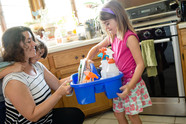
Take waste reduction beyond the bin with low waste cleaning and personal care products! Learn about options for simplifying and DIY-ing your cleaning and personal care products.
- Saturday, March 13 from 10 to 11 a.m.
- Tuesday, March 16 from 6 to 7 p.m.
Please RSVP on the Facebook events for March 13 or March 16 or by emailing your liaison. You can find the full schedule of workshops on our participant webpage.
|
New! April workshop: Backyard composting and worm composting
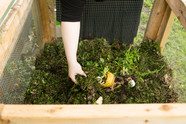
Thursday, April 8 from 6 to 7 p.m.
Learn how to compost at home! This course will cover backyard composting, from setting up the bin to troubleshooting issues with your pile. We will also include a section on vermicomposting, or composting indoors with the help of worms.
RSVP on the Facebook event or by emailing your liaison.
|
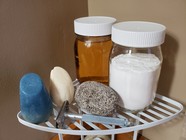
Eliminating waste from our daily care routines can be challenging because disposable items are a common part of every step. But there are certain choices you can make to reduce waste by focusing on packaging and single-use products and simplifying the products you use. To transition, think about switching your current product for a durable or plastic-free alternative when you are running low on it.
|
Reduce plastic packaging
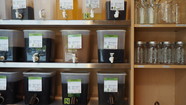
Simple swaps, a little creativity, and intentional bulk purchasing can reduce the plastic packaging you use in your bathroom. If you shop at a co-op grocery store or zero waste specialty store, check the bulk section for refillable hair and skin cleansing products.
Regular stores are also starting to carry more paper-wrapped, solid bar options to replace some or all of these products:
- Liquid hand soap
- Body wash
- Shampoo and conditioner
- Shaving cream
- Lotion
|
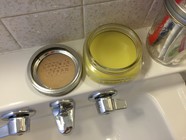
Another way to avoid excess packaging of your toiletries is to learn how to make your own products, including scrubs, moisturizers, and even deodorant.
If none of these options work for you, you can still be intentional about the size of the product you purchase. If you are going to buy something that comes in plastic packaging, buy in the largest size to reduce the overall packaging over time. This works well for things like shampoo or over-the-counter medicines. Just be sure you buy an amount that you will use up before the product expires.
You can also compare packaging and choose recyclable over nonrecyclable plastic items. For example, look for hair products packaged in a hard-plastic container versus a squeeze tube or medicines in a plastic bottle rather than blister packs.
|
Simplify your routine
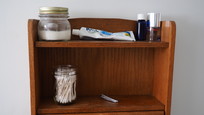
Consider cutting back on the number of products you use for your skin, face, and hair to save time, money, and waste. Some products in your bathroom can serve more than one purpose, and many are unnecessary. For example, limit the makeup you have on hand to one or two shades of products like eye liner, lipstick, or nail polish instead of an extensive selection that you use once or twice a year.
|
|
There are a lot of products you use in the kitchen that can be used for other purposes, such as olive or coconut oils. In addition to personal care products, use basic cleaning products such as baking soda and vinegar instead of specific bathroom cleaners for every different surface.
See the recipes section (PDF) of the Zero Waste Guide or Green Cleaning Recipes (PDF) for instructions.
|
|
 |
Replace disposables with reusables
There are many disposable bathroom items, from razors to bathroom cups to cotton swabs, that have an alternative option. Take a look throughout your bathroom and think about what items could be replaced with reusable alternatives. Here are some ideas to get you started:
Razors
 |
|
Instead of purchasing fully disposable razors, use one where only the head or the blade is replaceable. These blades tend to last much longer than cheaper blades. Take an additional step and shave like your grandparents by learning how to use a safety razor or straight edge blade. |
Feminine products
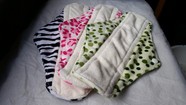 |
|
Swap out disposable pads and tampons with products such as menstrual cups or sponges, reusable pads, and/or period underwear. These options are more expensive than disposables up front but save significant money over time as you reuse them. |
Tissues
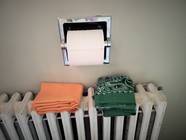 |
|
Swap out paper tissues for cloth handkerchiefs. These can reduce skin irritation as well. Just remember to wash them in hot water to prevent the spread of germs. |
Paper bathroom cups
 |
|
If you use paper or disposable plastic cups, switch them out for reusable ones. Each family member can have a designated color or design. This saves money, and the only extra work is washing a cup or sticking them in the dishwasher. |
Ice packs
Use a reusable ice pack and a towel to relieve injuries and headache pain and a reusable warm pack for muscle aches. One easy DIY heat pack is to fill a sock with rice and tie a knot in the end. This can be microwaved and reused.
See the bathroom section (PDF) of the Zero Waste Guide for additional ideas for reducing waste with your personal care routine.
|